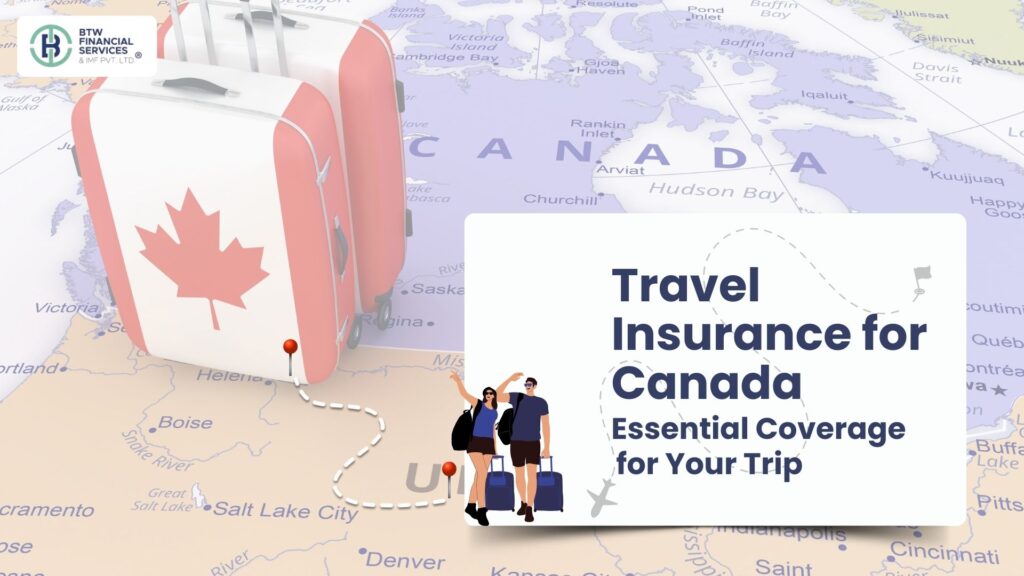Travel Insurance for Canada: Essential Coverage for Your Trip
Summary:
- Why You Need It: Protects against unforeseen medical emergencies, trip cancellations/interruptions, lost/stolen luggage, and travel delays in Canada.
- Essential Coverage:
- Medical & Hospital Insurance
- Trip Cancellation & Interruption
- Travel Delay & Missed Connection
- Baggage & Personal Effects
- Key Tips:
- Buy in advance
- Disclose pre-existing conditions
- Understand policy exclusions
- Action Item: Review and purchase a policy that matches your needs before your Canadian trip to ensure a worry-free experience.
Table of Contents
- Introduction to Travel Insurance for Canada
- Why Do You Need Travel Insurance for Canada?
- Essential Coverage Types for Your Trip to Canada
- How to Choose the Right Travel Insurance for Canada
- Detailed Explanation of Key Coverage Areas
- Tips for Buying Travel Insurance for Canada
- Final Checklist for Your Travel Insurance
- Frequently Asked Questions (FAQs) About Travel Insurance for Canada
1. Introduction to Travel Insurance for Canada
Travel insurance for Canada is designed to protect you against unforeseen circumstances that could jeopardize your trip, whether you’re visiting for leisure, business, or to explore family ties. From the majestic Rocky Mountains to the vibrant streets of Toronto, ensuring you have the right coverage enhances your Canadian experience.
2. Why Do You Need Travel Insurance for Canada?
- Medical Emergencies: Healthcare in Canada can be very expensive for non-residents. Insurance helps cover unexpected medical bills.
- Trip Cancellations/Interruptions: Safeguards your financial investment if you need to cancel or cut your trip short due to unforeseen circumstances.
- Lost, Stolen, or Damaged Luggage: Provides reimbursement for essential items and luggage, minimizing travel disruptions.
- Travel Delays: Offers compensation for accommodations and meals during unexpected layovers.
3. Essential Coverage Types for Your Trip to Canada
a. Medical and Hospital Insurance
- Coverage Amount: Opt for at least $1 million CAD in medical coverage.
- Pre-existing Conditions: Conditions you’ve been treated for or have shown symptoms of before buying insurance. A time frame (often 3-6 months) during which your condition must not have shown symptoms or required treatment for it to be covered.
- Emergency Medical Evacuation: Coverage to transport you to a medical facility or back home if necessary.
b. Trip Cancellation and Interruption Insurance
- Coverage: Should match the full cost of your trip.
- Reasons for Cancellation: Look for policies covering a broad range of unforeseen events, including:
- Natural Disasters
- Serious Illness/Death of a Family Member
- Travel Supplier Bankruptcy
- Unexpected Jury Duty
c. Travel Delay and Missed Connection Coverage
- Daily Allowance: Ensure it covers reasonable costs for meals and accommodations.
- Minimum Delay Time: Typically 4-6 hours before you can claim.
- Missed Connection: Covers expenses if you miss a connection due to the late arrival of your previous flight.
d. Baggage and Personal Effects Coverage
- Coverage Limit: Sufficient to cover your valuables; consider itemizing expensive items.
- Deductible: Understand the deductible per item and overall.
- High-Value Item Coverage: For luxury goods, ensure they’re explicitly covered.
e. Emergency Assistance
- 24/7 Support: Crucial for immediate help in emergencies.
- Language Support: Ensure support in your language if you’re not fluent in English or French.
- Travel Advice: Assistance with travel plans, visa requirements, and health precautions.
4. How to Choose the Right Travel Insurance for Canada
- Assess Your Needs:
- Trip Duration
- Activities (e.g., Skiing, Hiking)
- Personal Health Conditions
- Policy Comparison:
- Use Online Tools
- Coverage, Prices, and Reviews
- Read the Fine Print:
- Understand What’s Covered and What’s Not
- Exclusions and Limitations
- Check with Your Credit Card:
- Some Premium Cards Offer Built-in Travel Insurance
5. Detailed Explanation of Key Coverage Areas
- Medical Coverage Scenarios in Canada: Insurance covers unexpected visits, including tests and treatments.Reimbursement for prescribed medications due to an emergency.
- Trip Cancellation Scenarios: Policy covers trip cancellation if your destination is hit by a natural disaster.Allows for trip cancellation if a close family member falls seriously ill.
6. Tips for Buying Travel Insurance for Canada
- Buy in Advance: To be covered for trip cancellations from the moment you purchase.
- Disclose Pre-existing Conditions Honestly: To avoid claim denials.
- Keep Policy Details Handy: Ensure easy access to your policy number and emergency contacts during the trip.
- Review and Understand Exclusions: Especially for adventure activities or pre-existing conditions.
7. Final Checklist for Your Travel Insurance
- Policy Number and Provider Contact Information
- Detailed Coverage (Medical, Trip, Baggage, etc.)
- Claims Procedure and Required Documents
- Emergency Assistance Contact and Language Support
- Review and Understand All Exclusions and Limitations
- Get professional insurance advice to find the best and most affordable coverage for your travel needs.
Frequently Asked Questions (FAQs) About Travel Insurance for Canada
Q: Do I need travel insurance if I have a health card from my home country?
Yes, as most health cards do not cover you fully abroad, especially for emergency evacuations or non-medical emergencies.
Q: Can I buy travel insurance after I’ve already left my home country?
Some providers offer post-departure purchase, but it may not cover trip cancellations before the policy’s effective date.
Q: Are adventure activities like skiing covered?
Some policies cover adventure activities, but often at an additional cost. Always check the policy’s fine print.
Q: How do I make a claim?
Contact your provider’s emergency assistance for guidance. Typically, you’ll need to submit a claim form with supporting documents (e.g., medical bills, police reports).




